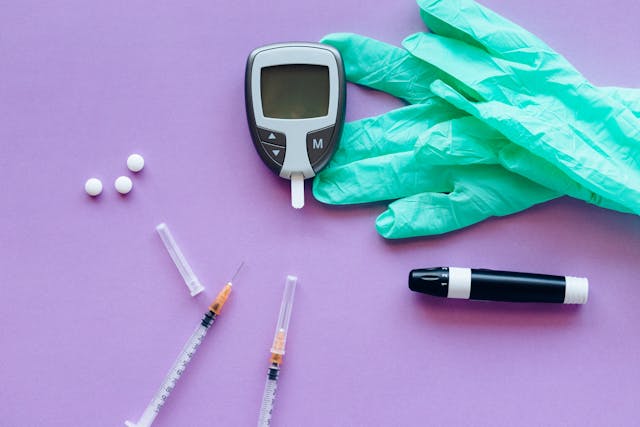Table of Contents
Muscle Gain
Muscle gain, also known as muscle hypertrophy, is the process of increasing muscle size through various methods such as diet adjustments and exercise regimens. This comprehensive guide explores the importance of muscle growth for health and fitness, different categories of muscle growth techniques, and how to assess progress effectively using products like big muscle gainer, my protein gainer, and Impact weight gainer.
Defining Muscle Gain
Muscle gain refers to the increase in muscle mass, typically achieved through resistance training and adequate nutrition. It involves hypertrophy, where muscle fibers grow in size due to an increase in protein synthesis and the formation of new muscle tissue.
Importance of Muscle Mass for Health and Fitness
Muscle mass plays a crucial role beyond aesthetics. It supports overall strength, metabolism, and bone health, while reducing the risk of injuries and chronic diseases such as osteoporosis and diabetes. Maintaining muscle mass is essential for maintaining functional independence and quality of life as we age.
Types and Categories of Muscle Building Methods
There are two primary categories of muscle-building methods:

1. Diet-Based Approaches: Focus on consuming a caloric surplus and optimizing macronutrient ratios to support muscle growth, utilizing products like big mass gainer and my protein gainer.

2. Exercise-Based Approaches: Include resistance training, progressive overload, and specific workout strategies aimed at stimulating muscle hypertrophy.
High-calorie diets are often utilized to provide the energy and nutrients necessary for muscle repair and growth, incorporating high calorie shakes and high calorie healthy foods. These diets typically include lean proteins, complex carbohydrates, and healthy fats. In contrast, exercise-based techniques focus on creating mechanical tension on muscles to induce hypertrophy through resistance training and progressive overload.
Comparison of Diet-Based vs. Exercise-Based Approaches
Both diet-based and exercise-based approaches are crucial for maximizing muscle gain:
- Diet-Based Approaches: Provide the necessary building blocks (proteins, carbs, fats) and energy surplus for muscle growth, utilizing products like big muscle gainer and Impact weight gainer.
- Exercise-Based Approaches: Stimulate muscle fibers through resistance training and progressive overload, prompting adaptations that lead to hypertrophy.
Symptoms and Signs Indicating Muscle Gain Progress
Signs of muscle gain progress include:
- Increased Muscle Size: Visible changes in muscle size and definition.
- Strength Gains: Improved performance in resistance exercises.
- Muscle Endurance: Enhanced ability to sustain muscular effort over time.
Physical Changes in Muscle Size and Strength
Muscle growth results in measurable changes in muscle circumference, thickness, and strength. These changes are a direct outcome of increased protein synthesis and muscle fiber recruitment during resistance training.
Psychological Indicators of Progress
Psychological indicators include:
- Mental Toughness: Improved resilience during challenging workouts.
- Confidence: Enhanced self-esteem due to physical changes.
- Motivation: Increased dedication to fitness goals.

Causes and Risk Factors Influencing Muscle Growth
Factors influencing muscle growth include:
- Biological Factors: Genetics, hormone levels (such as testosterone), and age.
- Environmental Factors: Exercise frequency, intensity, and recovery.
- Nutritional Factors: Caloric intake, macronutrient distribution, and nutrient timing.

Diagnosis and Tests for Assessing Muscle Mass
Assessment methods include:
- Body Composition Analysis: Measures body fat percentage, muscle mass, and bone density.
- Muscle Fiber Type Testing: Determines the distribution of muscle fiber types (slow-twitch vs. fast-twitch) influencing muscle performance and adaptation.

Treatment Options for Maximizing Muscle Growth
Effective treatments include:
- Diet Adjustments: Maintaining a caloric surplus and optimizing protein intake to support muscle repair and growth, utilizing products like big muscle gainer and my protein gainer.
- Exercise Regimens: Incorporating resistance training, progressive overload, and variation in workout intensity to stimulate muscle hypertrophy.
Preventive Measures to Sustain Muscle Gain
Sustainable strategies include:
- Long-Term Dietary Planning: Balancing caloric intake with energy expenditure to maintain muscle mass.
- Maintenance Exercises: Incorporating regular resistance training sessions and adapting workout routines to prevent muscle atrophy.
Personal Stories and Case Studies on Successful Muscle Gain
Real-life examples illustrate:
- Transformation Journeys: Stories of individuals achieving significant muscle gain through dedication and structured training programs.
- Insights from Athletes: Experiences of athletes and fitness enthusiasts on overcoming challenges and reaching muscle gain milestones.
Expert Insights on Optimizing Muscle Building Efforts
Nutritionists recommend:
- High-Calorie Diets: Emphasizing lean proteins, complex carbohydrates, and healthy fats to support muscle repair and growth, incorporating products like big mass gainer and Impact weight gainer.
Trainers advise:
- Effective Workout Strategies: Incorporating progressive overload, compound exercises, and adequate recovery periods to maximize muscle hypertrophy.
Conclusion: Key Takeaways and Actionable Advice
In conclusion, achieving muscle gain requires a multifaceted approach encompassing nutrition, exercise, and consistency. By understanding the principles of muscle hypertrophy, implementing effective strategies, and monitoring progress through physical and psychological indicators, individuals can optimize their muscle-building efforts and achieve sustainable results using products referenced on Amazon.in.
Recap of Muscle Gain Principles
Key principles include:
- Nutritional Optimization: Maintaining a caloric surplus and adequate macronutrient distribution.
- Exercise Prescription: Tailoring resistance training programs to individual goals and fitness levels.
- Monitoring Progress: Assessing physical changes and psychological indicators to track muscle gain.
Encouragement for Continued Progress and Maintenance
Maintaining muscle gain is a lifelong commitment requiring dedication to healthy habits and ongoing lifestyle adjustments. By embracing the principles outlined in this guide and seeking guidance from fitness professionals, individuals can sustain muscle mass and enjoy the benefits of enhanced strength, vitality, and overall well-being.






